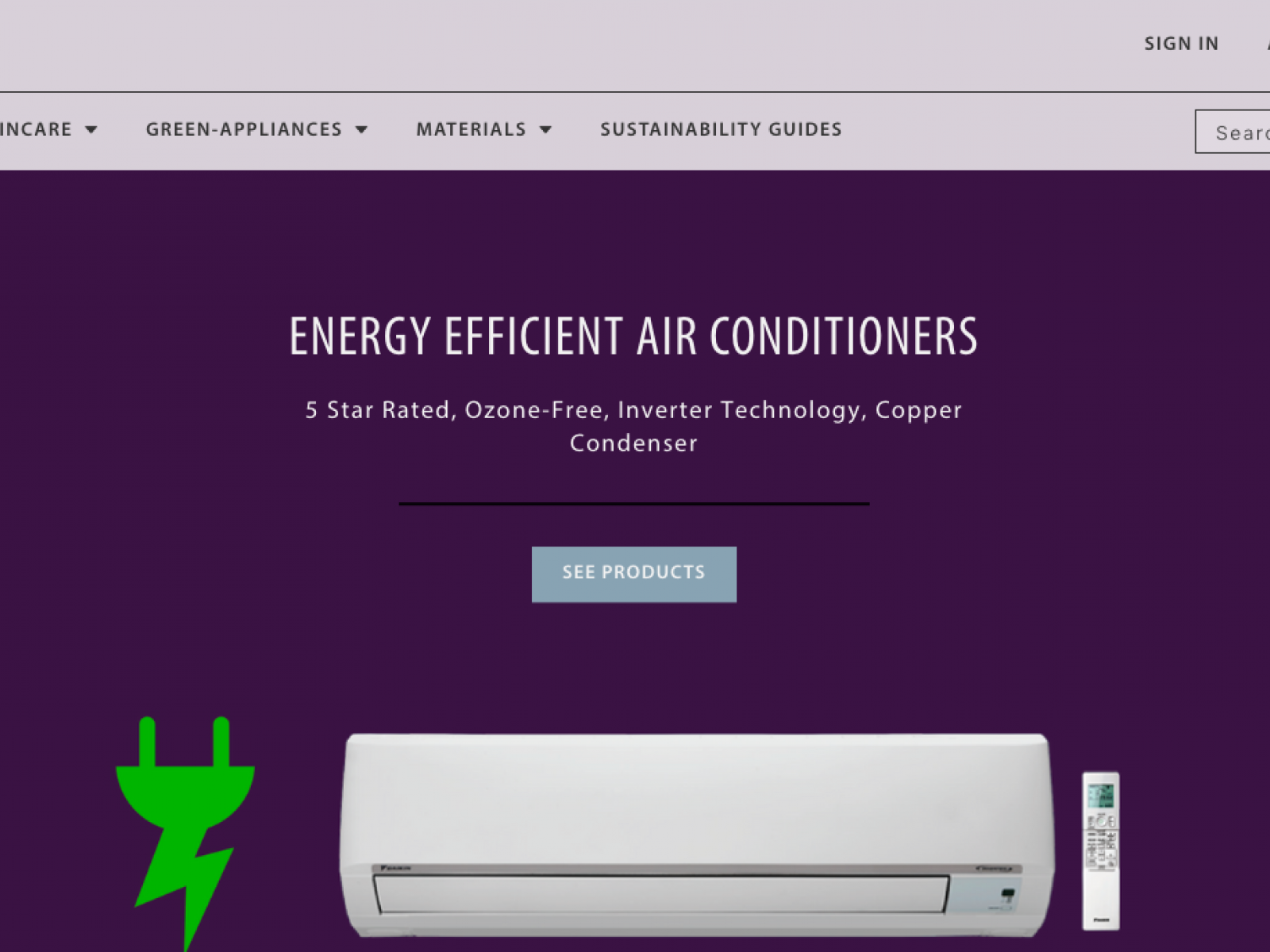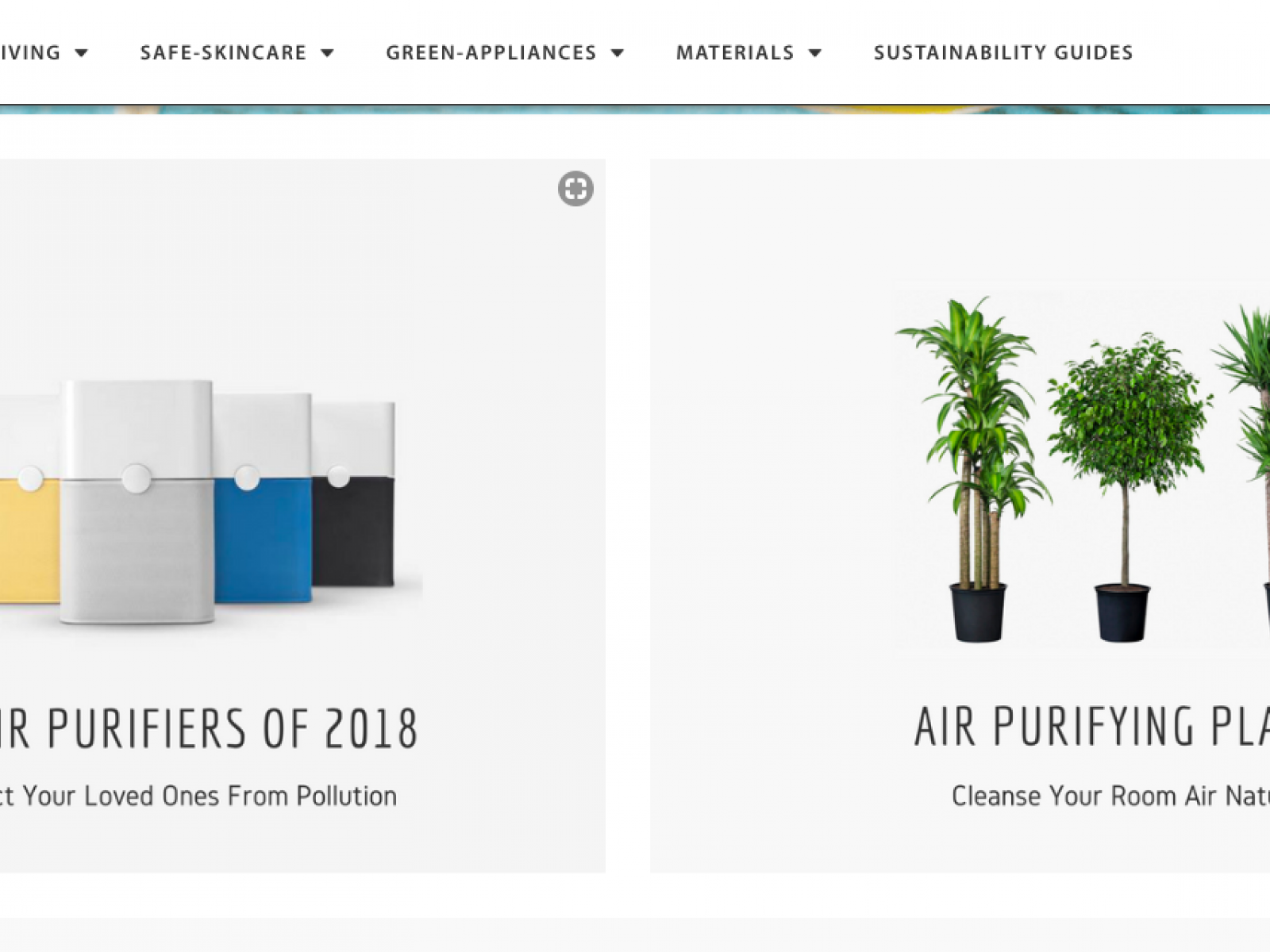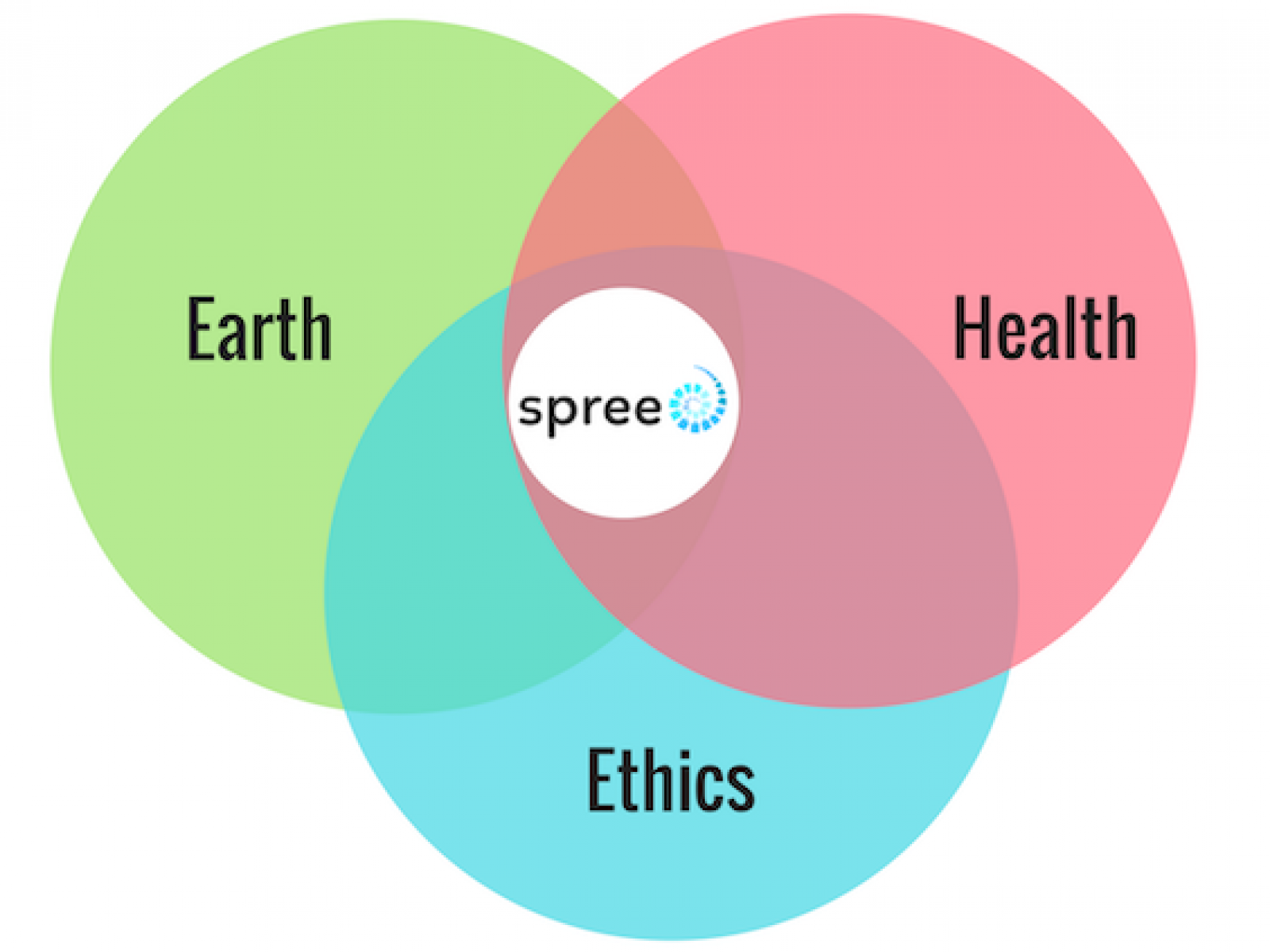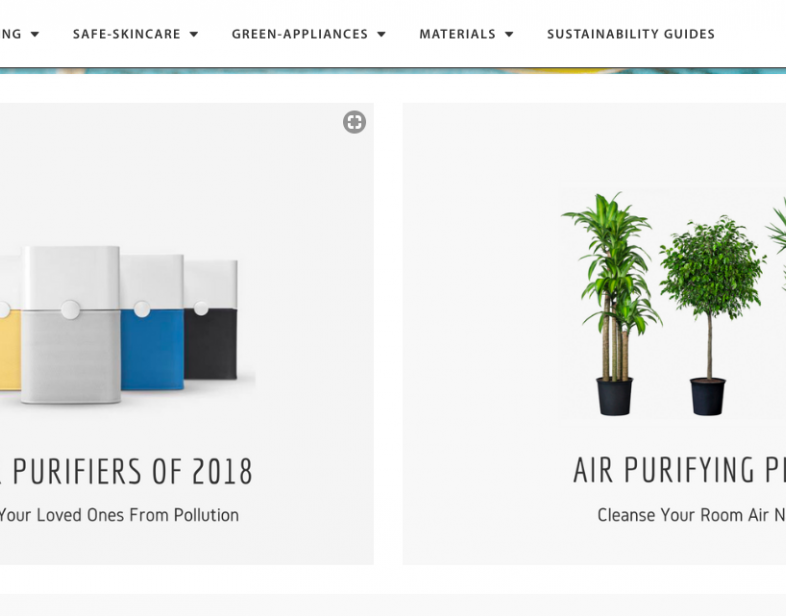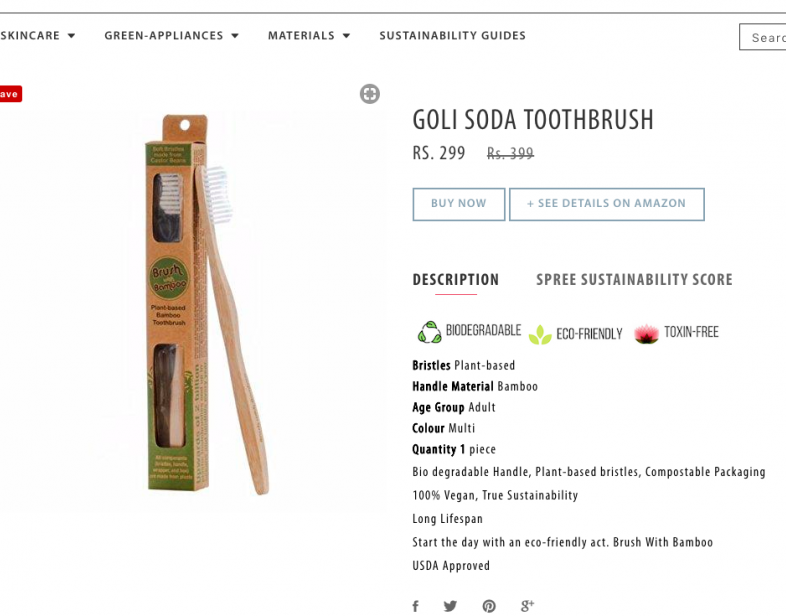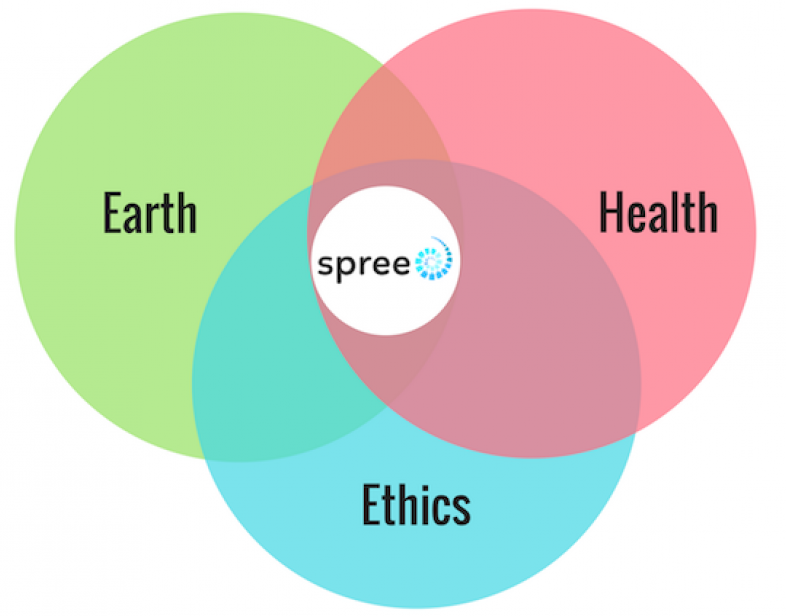An Overview Of Our Solution
There is a mounting pressure on resources in India exacerbated by changes in society and economy. The urban population wants more cars, bigger houses, gadgets and appliances, but the country is ill equipped at managing the waste, resulting in land, air and water pollution. With cheap technology and internet access, online shopping grew at 23% last year.
To tackle consumer-led climate change we built an online platform focused on providing solutions to an urban dweller to change unsustainable consumerism. Spree works like an auto-correct for everything you can buy, with sustainability in mind. We provide alternatives that reduce plastic consumption, provide easy ways to have energy efficient homes, products free from harmful chemicals like BPA. With content aimed at providing information, we encourage better consumption habits using nudges.
- Population Impacted: 100,000 interactions
- Continent: Asia
Context Analysis
For years, the Indian consumer lived consumed essential items only. The new Indian consumer though is rapidly catching up to their global counterparts. India's emissions are 1/3rd of the global average and far lower than western countries. But in absolute terms, we currently account for over 4.5 percent of global emissions. With increasing prosperity, Indians now own appliances which have increased demand for electricity. Consumers use and discard materials irresponsibly resulting in waste clogging up rivers, villages and choking wildlife. Electronic waste goes to landfill releasing toxins. Emissions are rising due to changing lifestyles and pollutants from industries and cars. Last year, Delhi was the world’s most polluted city.
Since the Indian consumer has not yet been heavily exposed to consumerism, it is the most apt time to impress their minds into consuming sustainable and eco-friendly products, which is what we at Spree aim to do.
Describe the technical solution you wanted the target audience to adopt
Our business answers questions we assume a responsible consumer would ask before making a purchase. We vet products on these criteria:
1.Sustainability
2.Health
3.Ethics
Products are evaluated for materials, chemicals & disposal. Once a product passes the filtration process, it gets featured on the store. Along with the vetting process, we complement our products with guides, which provide actionable info to make the switch easier.
1.We encourage use of materials like copper, clay, bamboo over plastic in items like kitchen storage.
2.Personal care items like sanitary pads are easily replaced by more benign bioplastics. An average woman will use around 16,000 or more tampons or pads in her lifetime. Using biodegradable pads can reduce this impact.
3.Refrigerant management was declared as the top solution to the climate crises. We undertake in-depth research to understand appliances and promote the ones that use ozone-free and low Global Warming Potential refrigerants
Type of intervention
Describe your behavioral intervention
We had a choice of targeting a niche or mass audience. We chose mass to increase impact. This added behavioural complexity. Using our knowledge of consumer psychology, we tried to circumvent these with:
1. Reducing Cognitive Load: The average attention span on the internet is 8 secs. We have to intrigue, compete and create a memory in that time. To reduce cognitive load we make sure our content is not daunting. We put forth unique, fresh ideas; summarise as lists, and make them instantly relatable.
2. Avoiding Activism: The Indian urban populace perceives activism as agenda and is instantly turned off by it. To avoid such over-looking by prospective consumers, we keep our tone neutral. We are intervening by keeping our communication straightforward, devoid of blame, focusing on solutions instead of problems. The idea is to ease users into sustainability and let them feel in control of their decision-making. We strongly believe that a long-term shift in behaviour is achieved by a holistic approach.
3. Handling Groupthink: Indians are uncomfortable with being different and like to fit in. Anyone exploring new territory (sustainability in this case) often becomes difficult to relate to. To avoid this straightjacket of thought, we make our products look like better versions of existing ones. We leverage curiosity about the new, emphasize on design and social approval and use that to our benefit by offering eco-friendly products
As needed, please explain the type of intervention in more detail
Emotional Appeals:
Environmental concern does not translate to lifestyle changes. Eco-credentials alone do not warrant purchase. Health, however, is a personal issue and decision makers at home try to find healthier alternatives. Every eco-product on our store has a health benefit. We consciously follow a health-first approach to create an emotional appeal. Our results indicate that this emotional appeal sways people towards making more eco-friendly choices.
Choice Architecture:
We follow the rule of three to build choice architecture. It is more effective in execution of content and the user is more likely to remember the information. It also simplifies decision-making - more than three is clutter and overloads the brain and less than three causes disinterest. Wherever we expect a decision to be made, we provide the user with three choices.
Describe your implementation
Social media is a promising platform for new age marketing. Consumer packaged goods spend on social media increased more than 5000% yoy in 2017. However, social media is still largely a level-playing-field. It affords a voice to small businesses like ours to compete, which would not have been possible otherwise. Our social media campaigns achieve a high Relevance Score (calculated based on feedback received from the target audience) between 7-9 on a scale of 10 indicating that our communication resonates with our target audience. Over a period of 1 yr, our campaigns reached about 1 million users and evoked action from over 100,000
Our key success factors include:
1. Site Usability: The first impression of our business is our online store. We use “Attribute Priming” on the store by adding design-oriented qualifiers like toxin-free, carbon-neutral, air-purifying, to products making the purchase decision simpler. This is evidenced by a low bounce rate of 45% as compared to industry average of 55%. Average time spent is over 5 minutes.
2.Conversion Rate: Our conversion rate is more than 3% as compared to a 1% average.
3.Online Marketing Effectiveness: Our marketing efforts reflect our philosophy of saying more with less. Useing choice architecture helps reduce the number of choices and make it easy to peruse, understand and click.
Our biggest obstacle was building a scalable business. We did not have the bandwidth to develop traditional e-commerce. Our forte is research, knowledge and marketing and that would lose meaning in the midst of operations heavy challenges. To overcome that, we built a layer on top of existing green businesses and act as an affiliate instead of a retailer. Though Spree’s website looks like a store, our business operates as a marketeer and our revenues come from commissions that we earn by driving traffic to our partners' store. This helped us stay true to our strengths and induce impact without requiring a large investment
External connections
We are continually adding local innovators and businesses who are coming up with creative solutions to environmental issues and giving them the limelight by featuring them prominently on our store.
I also personally received training at the Climate Reality Leadership Corps and this experience has proven invaluable in collaborating with like-minded environmentally concerned individuals and we are constantly collaborating with other leaders.
Who adopted the desired behaviors and to what degree?
Our prime target audience is married and usually have children. They feel they owe a responsibility to more than just themselves and have deep concerns about family health. In general, they are more responsible consumers. Women, especially have taken up a leadng role in India in driving consciousness about the environment and adopting better consumption habits. We started our marketing efforts around June last year and our biggest selling products were copper, clay and earthenware storage products (bottles, tumblers, jugs, water storage) encouraging multiple uses as opposed to single-use plastics.
How did you impact natural resource use and greenhouse gas emissions?
The carbon footprint of each PET bottle is around 0.45 Kg of CO2eq and we have replaced upwards of 200kgs of CO2 in just the last year. An average human being disposes of over 13471 Kgs of plastic in their lifetime. If this plastic is replaced by recyclable/biodegradable, long lasting materials like copper, clay, bamboo, it could bring down an individual’s carbon footprint dramatically.
We heavily promote energy efficient appliances like air conditioners which save as much as 50% of electricity consumed. On an average 200kWh is saved by an efficient appliance. And we are expecting our yearly impact to be at least 40,000kWh which is about 30 tons of CO2.
What were some of the resulting co-benefits?
1. Encouragement to sustainable businesses: The main goal of our business is to promote sustainable business. By driving up the demand for sustainable products, we give incentive to a whole new lot of entrepreneurs and make this field more lucrative. We can foresee a change in consumption patterns if more and more businesses start selling environment friendly products.
2. Better livelihood for underprivileged: one of the three philosophies of our businesses is to ensure that none of the products we sell are made in sweatshops where workers are not paid fair wages. We believe in social equality and work for only the businesses that treat their workers fairly.
3. Spillover health benefits: health is the foremost consideration for us, nothing we recommend or feature impacts human health negatively. By selling our products, we make sure that humans live a happy, healthy, toxin free life
Sustainability
Spree does not rely on subsidies or grant funding but does rely on the revenues we generate. We have achieved our current level of impact without any funding. In the last year, we have clearly demonstrated that our business model is fundamentally sound.
Having said that, going forward we do require some capital to take the venture off the ground in a big way, create more loyal customers, have a stronger foothold in the urban space and actively drive away consumption from unsustainable businesses and products. We also would like to expand our team to have more experts curating our content, researching our products and helping us build the sustainability score.
Return on investment
As mentioned before, we have utilised a minimal amount capital to get the business started and after a year of operations we are breaking even. Our revenues are steadily growing and we feel confident.
The inspiration that drives our team is to make a dent in the looming chasm of climate change and we are very proud of the fact that we have already made an impact. The environmental-impact RoI is off the charts because we have done so with minimal cost.
How could we successfully replicate this solution elsewhere?
Our research and product curation process has been standardised over time and we feel confident that this business model can be applied to markets internationally. The technology on the backend is simple and easy to replicate.
This kind of a project has not been implemented before, to the best of our knowledge. Our costs mainly comprise human resource costs. We hope to build an unerring product assessment system which will include a life cycle analysis of materials. for which we need to partner with professors, researchers and other environmentalists that can provide us with data.
In the future, we would also like to extend our portfolio to include and assess solar and wind-powered energy solutions for homes, electric cars and vehicles to reduce the anthropogenic impact on the environment further. A similar service for businesses to help them reduce their plastic waste is in the pipeline.
